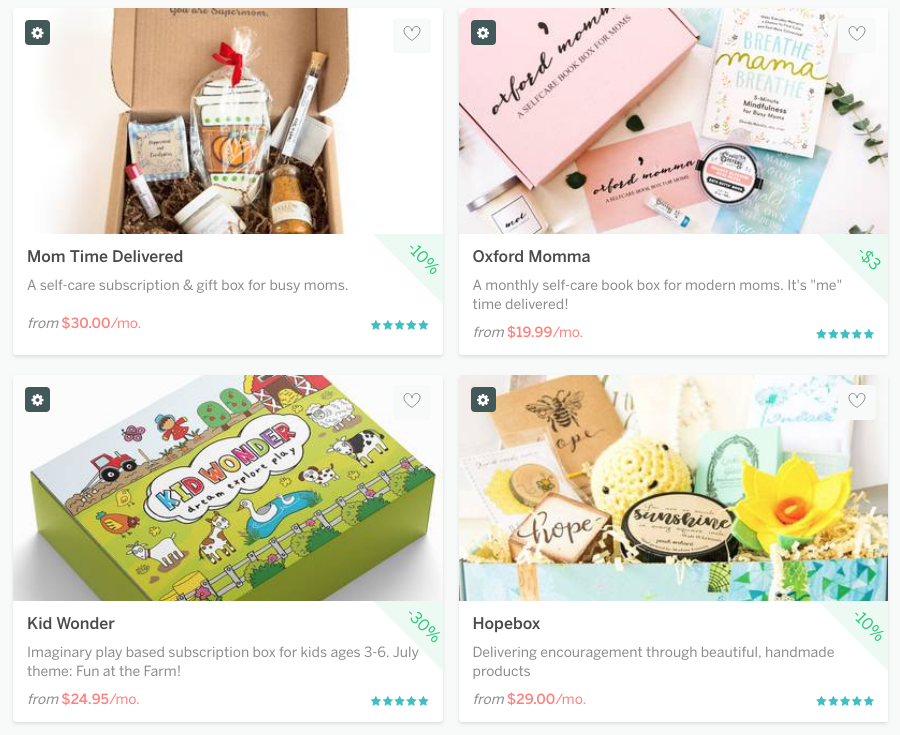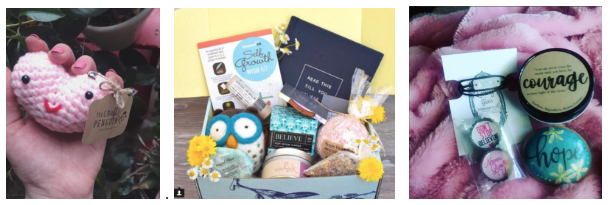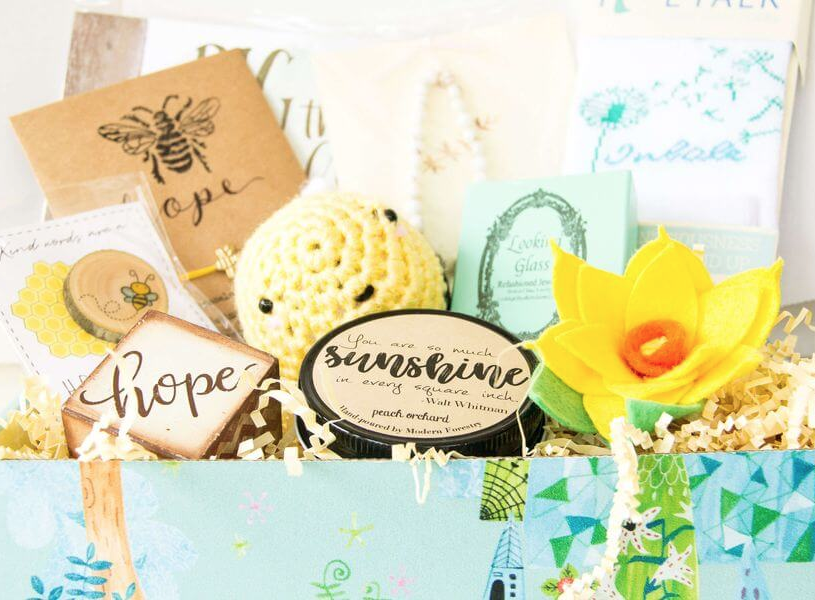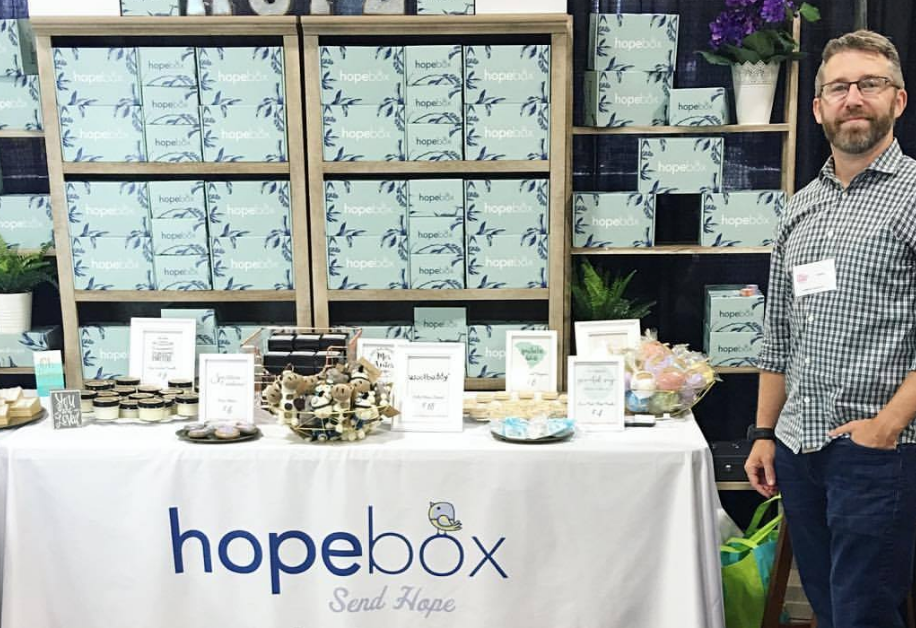Hopebox cofounder Derik Timmerman was a brand-new graduate of West Point when terrorists flew airplanes into the north and south towers of the World Trade Center.
In a way, the inspiration for Hopebox can be traced back to the aftermath of that tragedy. Serving as a military intelligence officer in the years that followed, Derik valued how much hope came from receiving mail.
“It was during those deployments [in Iraq] that I saw the impact a care package can have on soldiers who miss home and family members who long for their safe return,” Derik said.
I remember thinking, ‘What if this kind of hope was something available not just to soldiers, but everyone going through difficult times?’ – Co-founder Derik Timmerman
Growing a Movement
Hopebox launched in April 2017. Quickly, it became a go-to gift for anyone struggling, from college students leaving home to mourners grieving a recent loss. While it’s set up as a monthly subscription box, Hopebox also offers one-time gift subscriptions, allowing you to send a care package to whoever needs it.
For Derik and co-founders Matt and Kristin Timmerman, Cratejoy turned out to be the perfect choice to grow their movement. Since Derik had some software development experience, they had briefly considered building their own ecommerce platform in the beginning. “Now that we’re a year in,” Derik wrote, “I’m SO GLAD we went with Cratejoy instead.”
Cratejoy allowed them to track fulfillment costs, plus scale up and perfect what Hopebox meant to them and their customers.

“Cratejoy’s marketplace gave us the quick exposure we needed to try new things, polish our product, and scale quickly.”
Moreover, “all subscription businesses share a unique set of itty-bitty special requirements regarding shipping and billing… all of which have been thoughtfully handled in Cratejoy’s backend.”
Developing a Business to Be Proud Of
Derik had years of experience as a McKinsey management consultant, so he had a head for business already. “What I didn’t know,” he admitted, “was how many interesting (and sometimes frustrating) nuances there were to running a subscription business.” Cratejoy served as a major source of research to make Hopebox the success it is today.
“I devoured every Cratejoy blog article I could find on starting a subscription box. The inspiring first-person testimonials and stepwise, detailed walkthroughs of resources to get started were pure gold.”
Sure, there were a few stumbling blocks for Hopebox in the beginning –– as for any business. But those lessons have helped them grow into a subscription service with a dedicated, growing subscriber base.
“Rather than do an all-singing, all-dancing prelaunch campaign,” the founders decided to “[get] a product up on the Marketplace as fast as we possibly could.”
Launching immediately let them “respond to subscriber feedback by ruthlessly refining the product and listing daily”… or “launch, improve, repeat!” Listing on the Cratejoy Marketplace, Derik said, was like “a ready-made laboratory for improving Hopebox quickly.”
Once launched, Hopebox experienced an entirely new set of challenges as their business became more popular. Primarily, figuring out the kinks in their operational planning.
“Early on we didn’t really have any flex built into the way we got inventory into boxes. Over time, we’ve developed interested ways of handling overages by placing previous months’ inventory in different-sized box variants.”
Now, Hopebox offers three subscription levels: Hopebox Light (6+ products), standard (10+ products), and Hopechest (15+ products). They also offer Hopebox for Men, which offers 8+ products monthly.
Building an Audience
Cratejoy helped these busy professionals get Hopebox off the ground quickly — in subscriptions and on the web. “Hopebox.com is truly awesome, and we were able to build it on Cratejoy’s platform with Upwork freelancers for a fraction of what it wouldhave cost us to build an ecommerce solution from scratch,” Derik said. “The website building platform is magic.”
In addition to the Cratejoy Marketplace, the founders used three marketing channels to attract potential customers: “our subscribers, our makers, [and] social media.” Word-of-mouth really drove Hopebox’s clientele, particularly in the early days.
“The most surprising channel in terms of effectiveness was subscriber marketing, particularly the value of what we came to call ‘superfans.’ A superfan is someone who loves the mission of sending hope so much that they’re willing to tell anyone and everyone about us. And that may be the single best test of a subscription box idea,” Derik suggested. “Will it attract, engage, and inspire superfans?”

Sending Hope
The spirit behind the Hopebox community, however, matters more to these do-gooders than the number of orders they receive.
Derik thoughtfully shared with us some of the customer testimonials Hopebox has received on their sponsorship board: a place where those struggling through a difficult time can “request hope” and others can “send” it.
“Hundreds of testimonials have brought countless tears over the last year,” Derik said. “It’s the best part of Hopebox, and also the most humbling.” Recently, a mother posted to request a Hopebox for her young daughter living through depression and trauma; the community sponsored not one, but two, Hopeboxes within 20 minutes.
It’s easy to see what they mean when Derik, Matt, and Kristin refer to Hopebox as a movement. It’s right here, on their sponsorship board, where all their hard work makes a difference in the lives of others. “When together you have a big enough ‘why,’” Derik said, “you can overcome any ‘how.’”
We couldn’t agree more.
Cratejoy is an all in one subscription commerce platform that includes everything you need to start your own subscription commerce business online. Try it free for 14 days.




